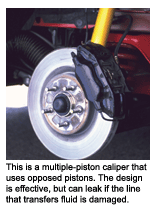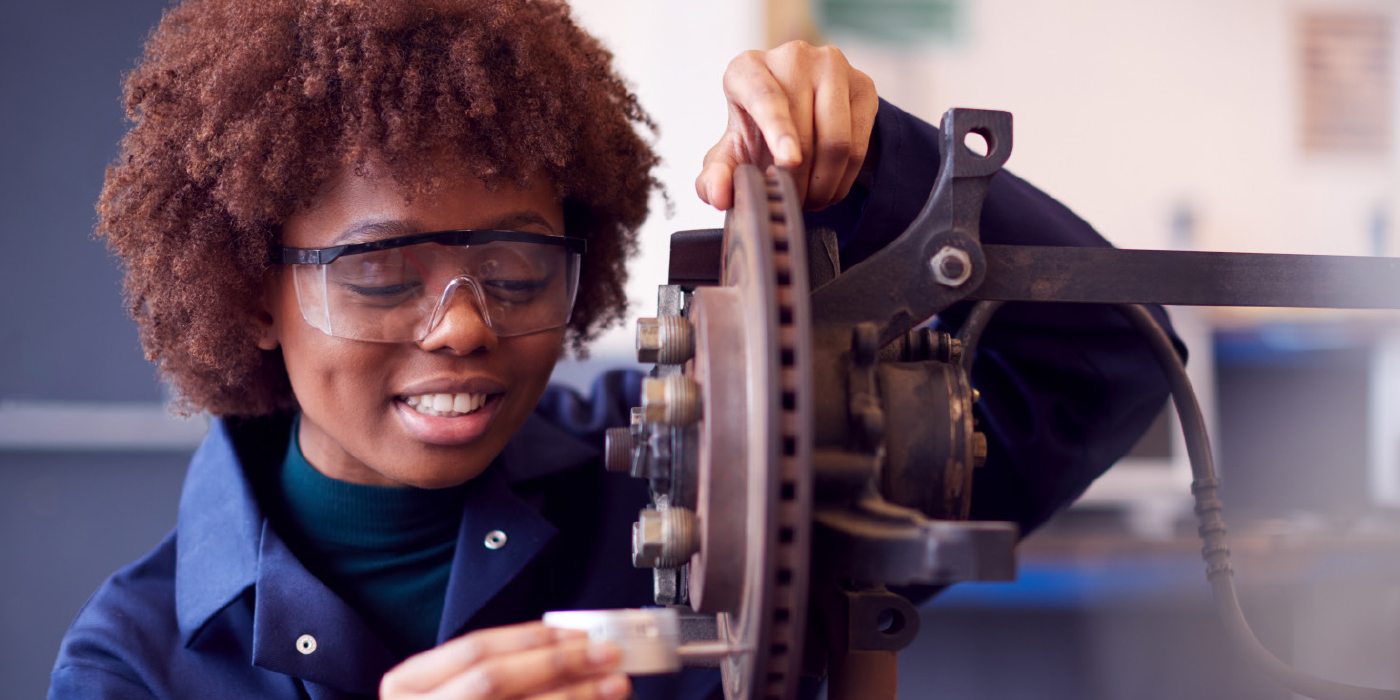generate more torque. More torque means more stopping power. Also, by using the floating caliper design instead of an opposing piston design, engineers are able to avoid wheel clearance issues and other robust design features of the floating caliper.
With a single-piston caliper, the footprint of pad is limited in some ways to the diameter of the piston. The diameter can only grow so large in relation to the rotor and brake pads. If the pad is too long, it flexes. When the pad flexes, it creates an uneven friction coupling on the rotor’s face. The uneven friction can create unwanted noise. If the flexing is sever enough, the friction material can separate from the backing plate. An example of this is the early Chrysler Neon. Also, there is a direct relationship between the diameter of the rotor and the diameter of the single piston caliper.
 With dual- or twin-piston brake pads, the pads can be larger with even pressure distribution. A larger brake pad has several benefits. First, a larger pad will absorb more initial heat (less thermal shock). Second, a larger brake pad will have better wear characteristics and a longer life due to even pressure distribution. Third, a larger pad is able to absorb more unwanted noise and vibration because it is able to cover more of the rotor.
With dual- or twin-piston brake pads, the pads can be larger with even pressure distribution. A larger brake pad has several benefits. First, a larger pad will absorb more initial heat (less thermal shock). Second, a larger brake pad will have better wear characteristics and a longer life due to even pressure distribution. Third, a larger pad is able to absorb more unwanted noise and vibration because it is able to cover more of the rotor.
Another advantage is in the area of drag and fuel savings. With dual- or twin pistons, it is possible to have more aggressive piston seals that can pull back the pads more effectively after the driver removes his foot from the brake pedal.
SERVICE CONSIDERATIONS
Dual-piston calipers can be serviced in the same manner as single-piston calipers with a few exceptions.
Look for uneven pad wear. If the pads have tapered wear, it could mean a problem with the caliper. Tapered wear could mean that the slides are binding or that one piston could be exhort more force than the other, or both conditions could be present.
The slides and bushings play a critical role on dual-piston calipers. If there is too much play, the caliper could rotate on the slides. This will cause uneven pad wear.
The pistons on dual-piston calipers may be difficult to retract. Both pistons must be pushed back at the same time and rate with special tools. If unequal force is used, it is possible to scrape the pistons against the bores. This can damage the finish and coatings on the pistons and bores. Also, it can damage the seals.













